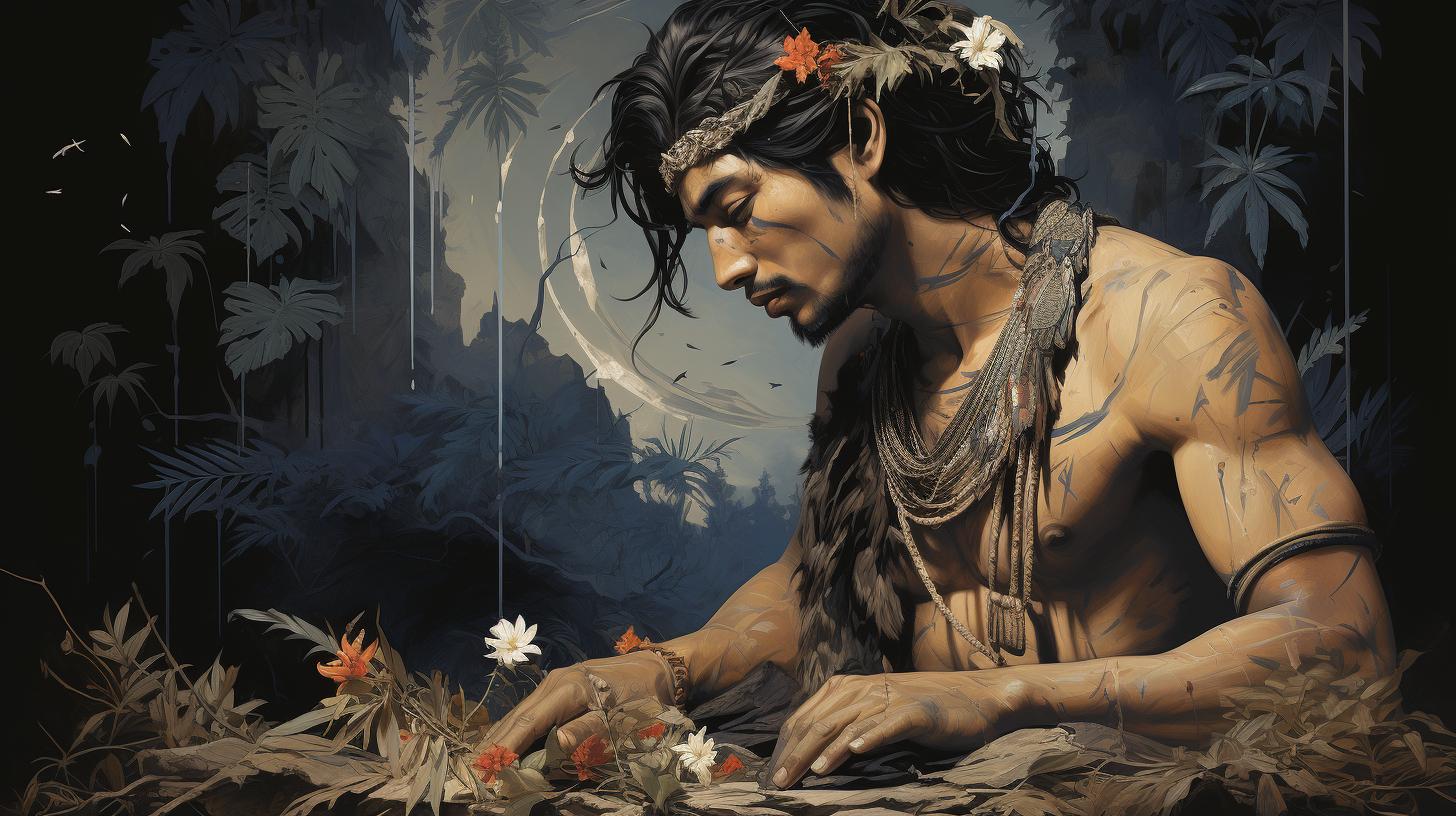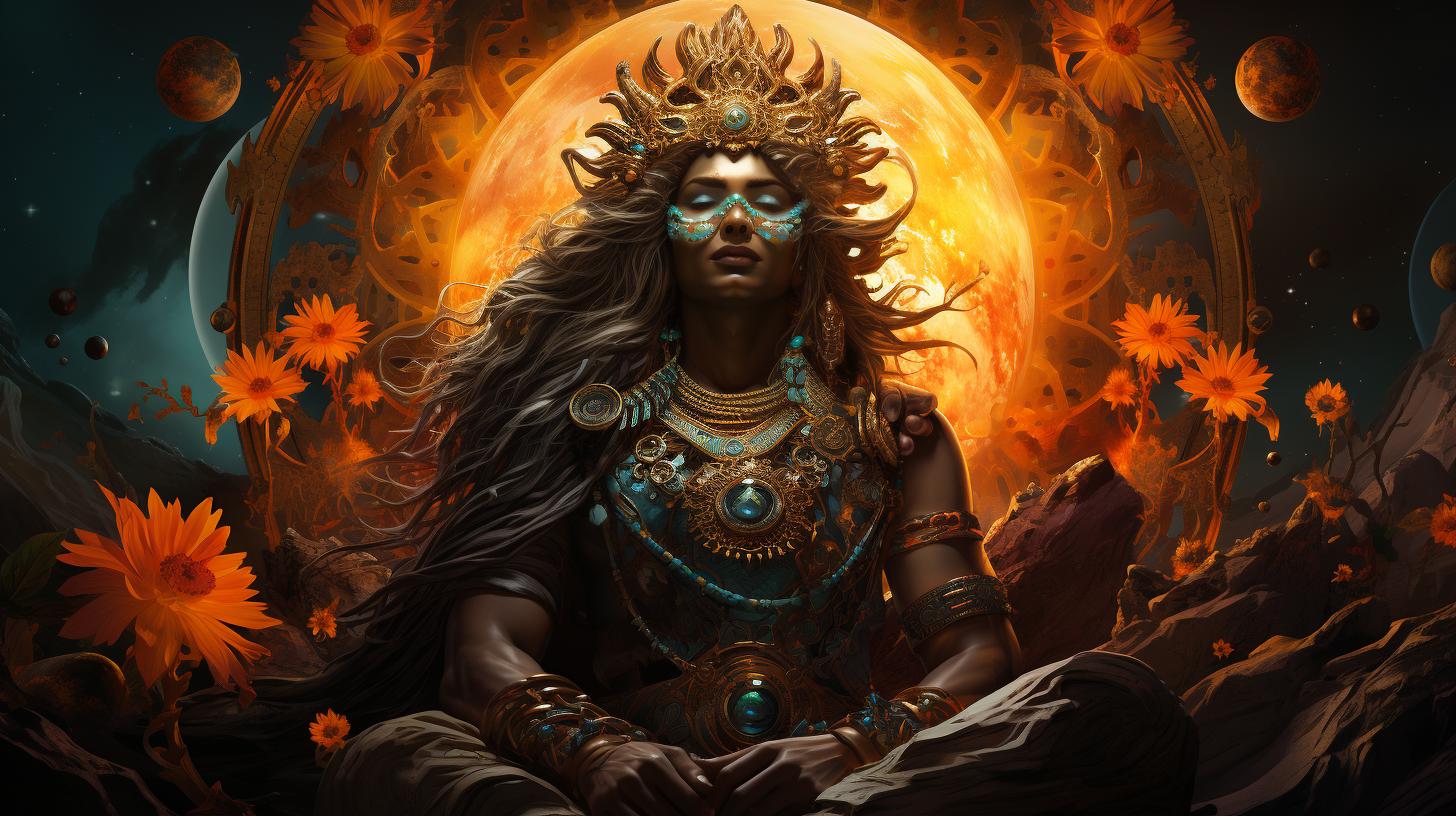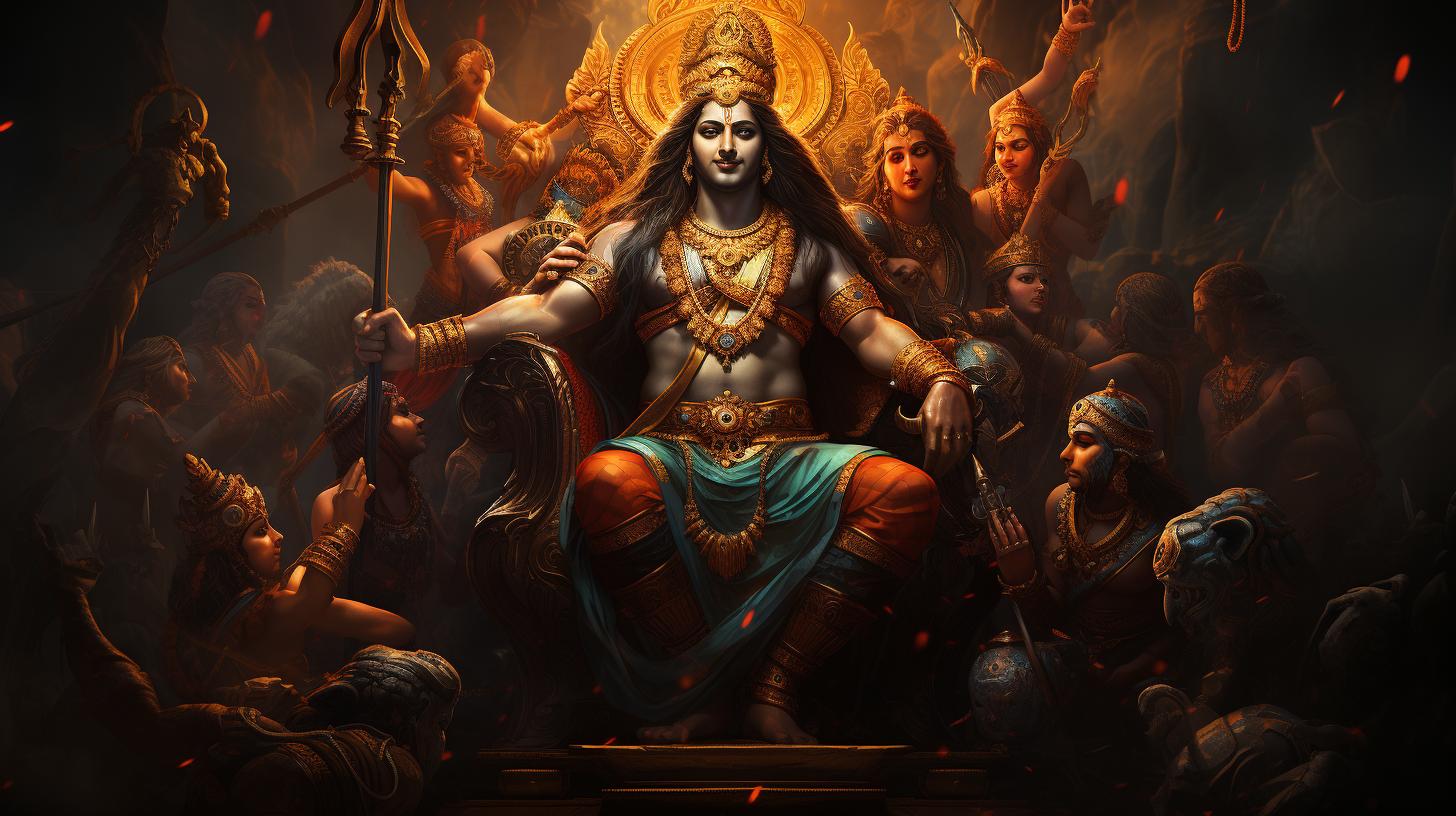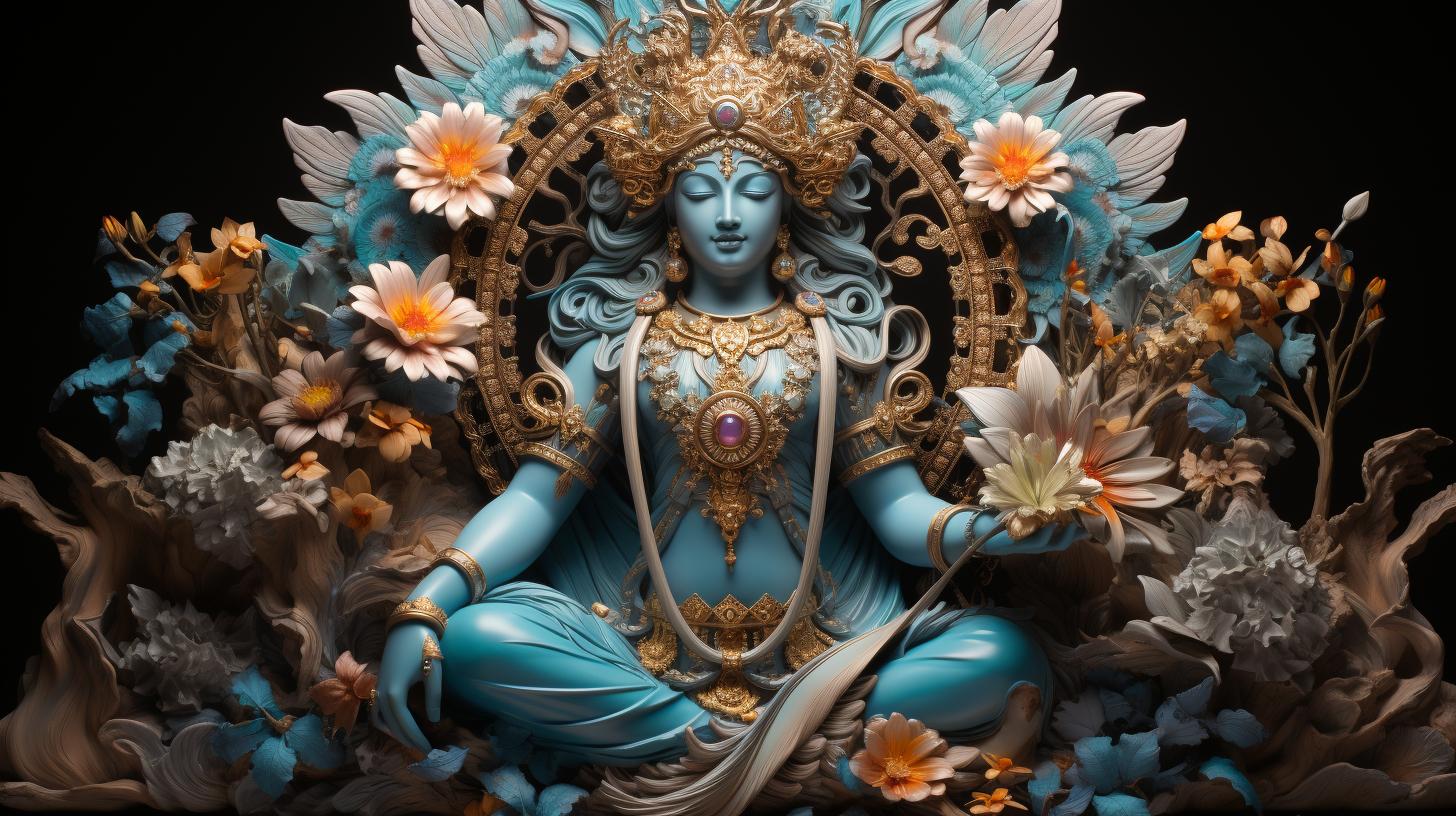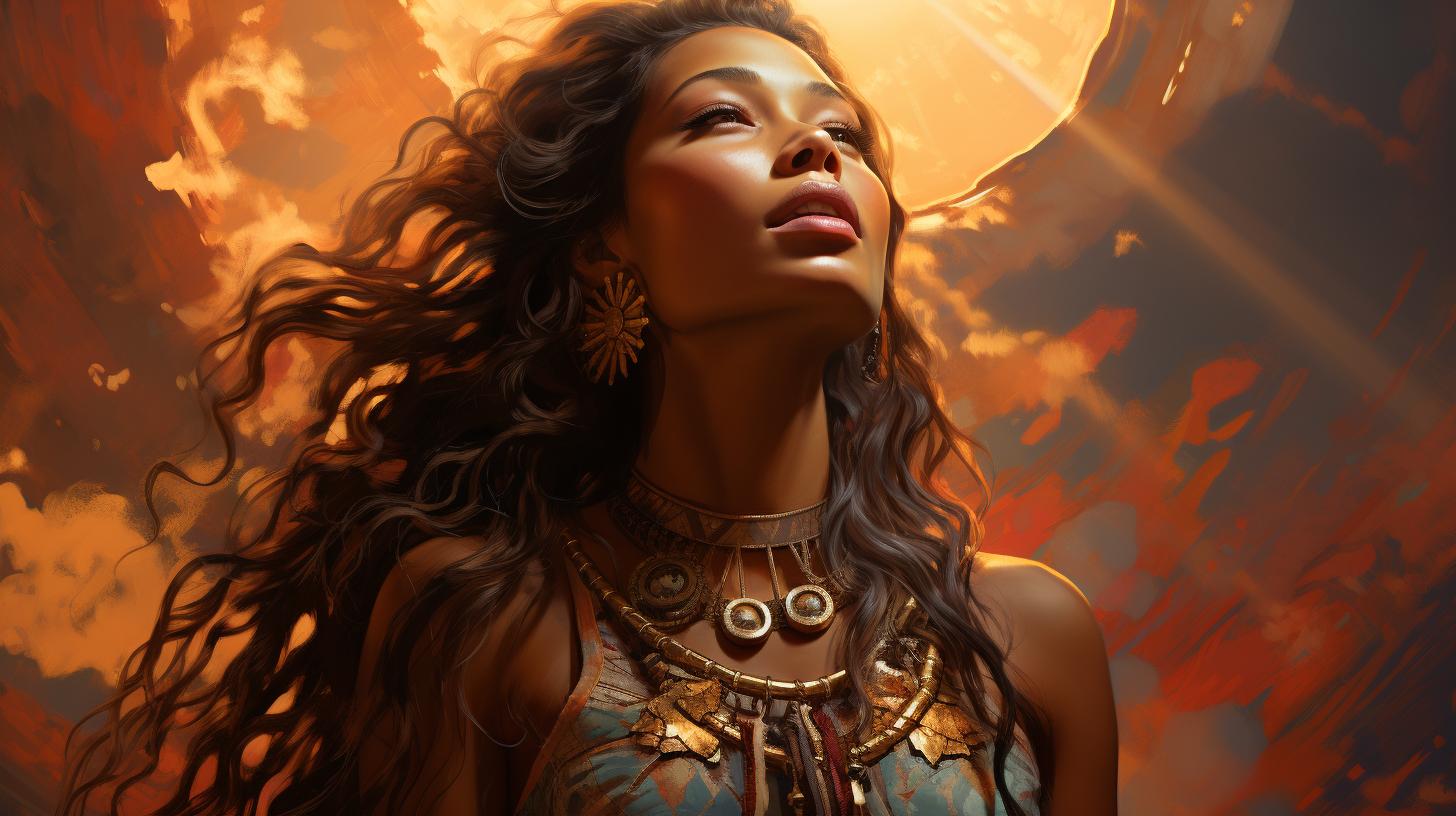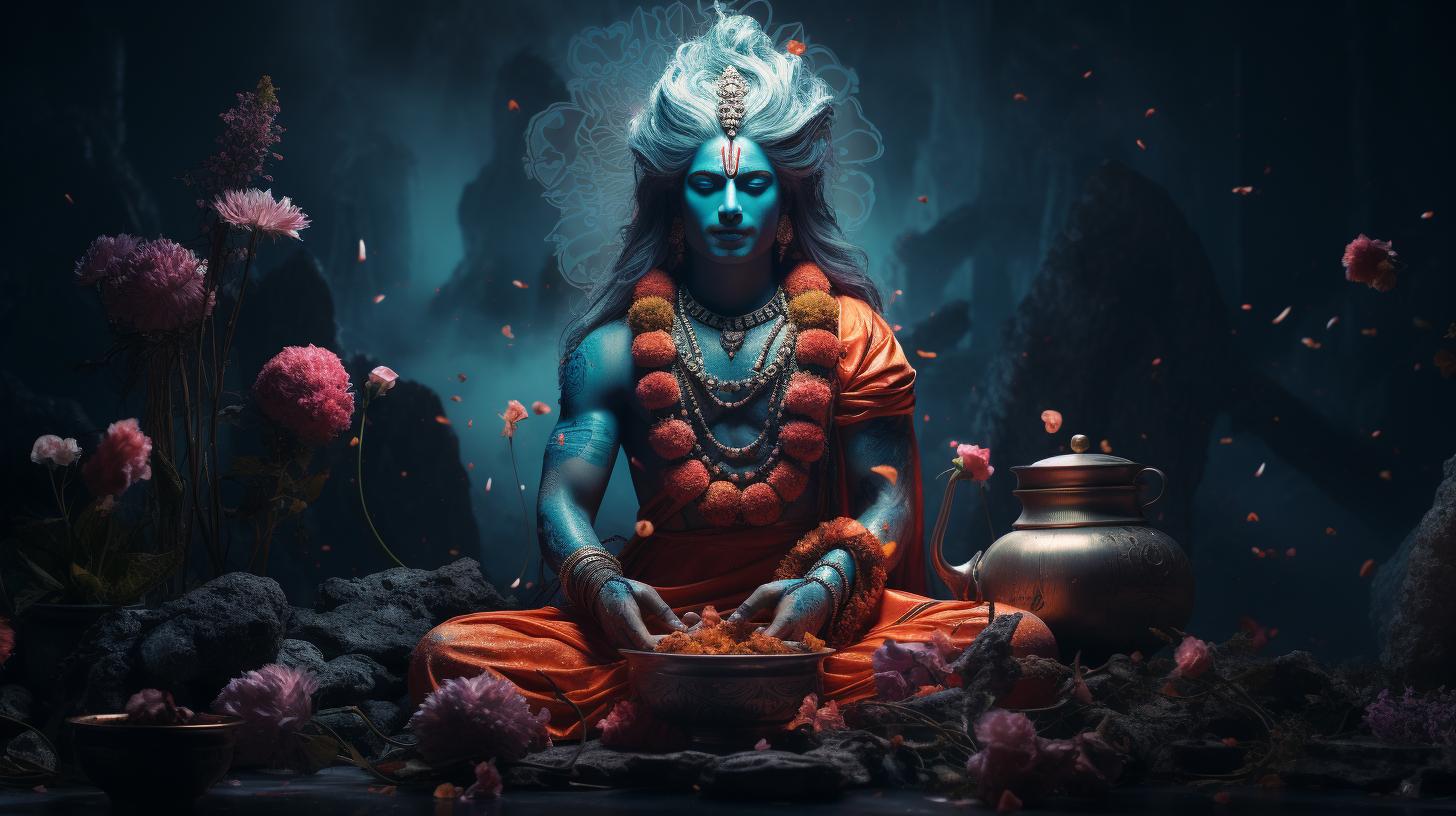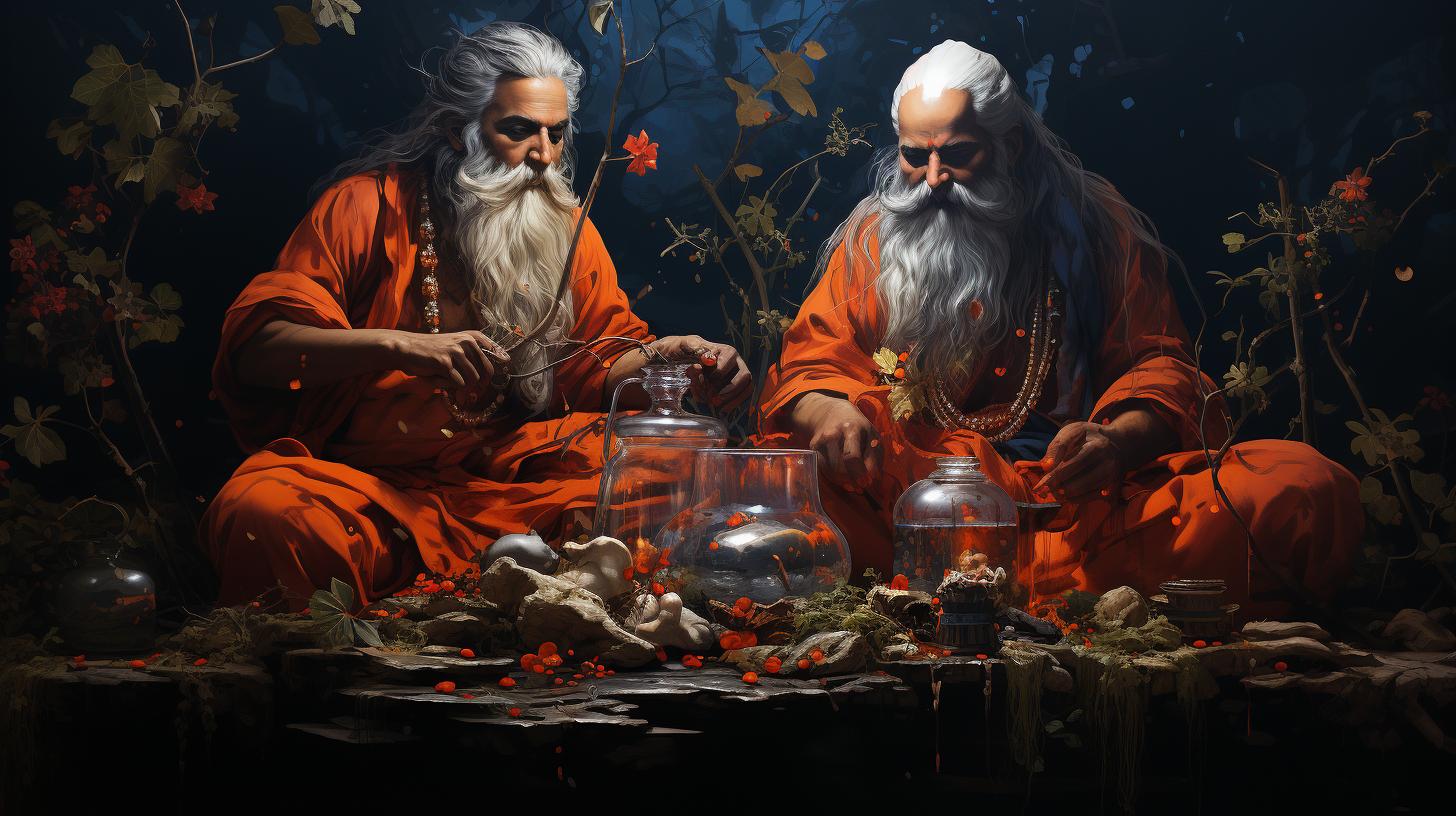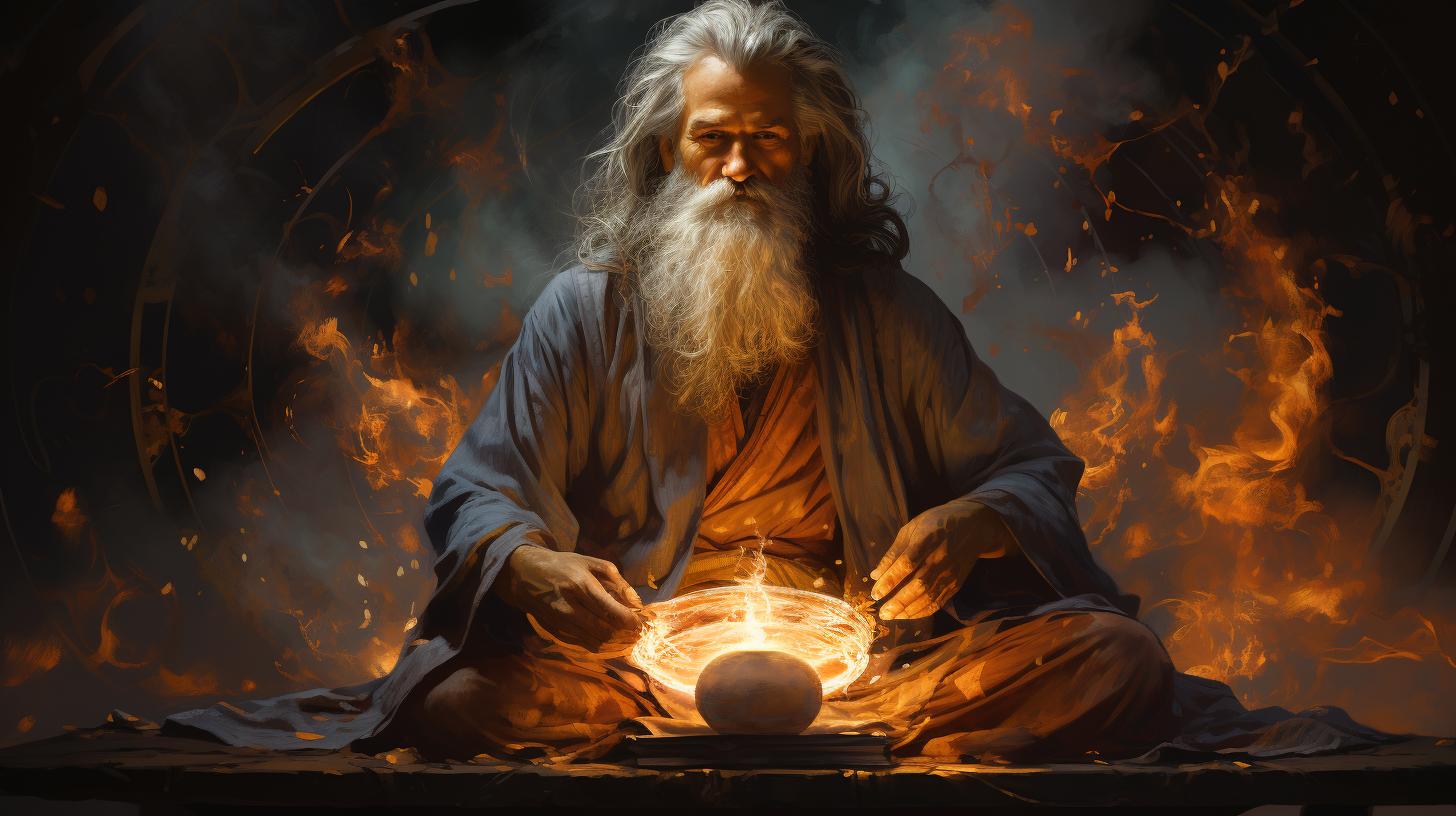The Legendary Story of Sage Manu: Exploring Hindu Mythology’s First Man and His Trials
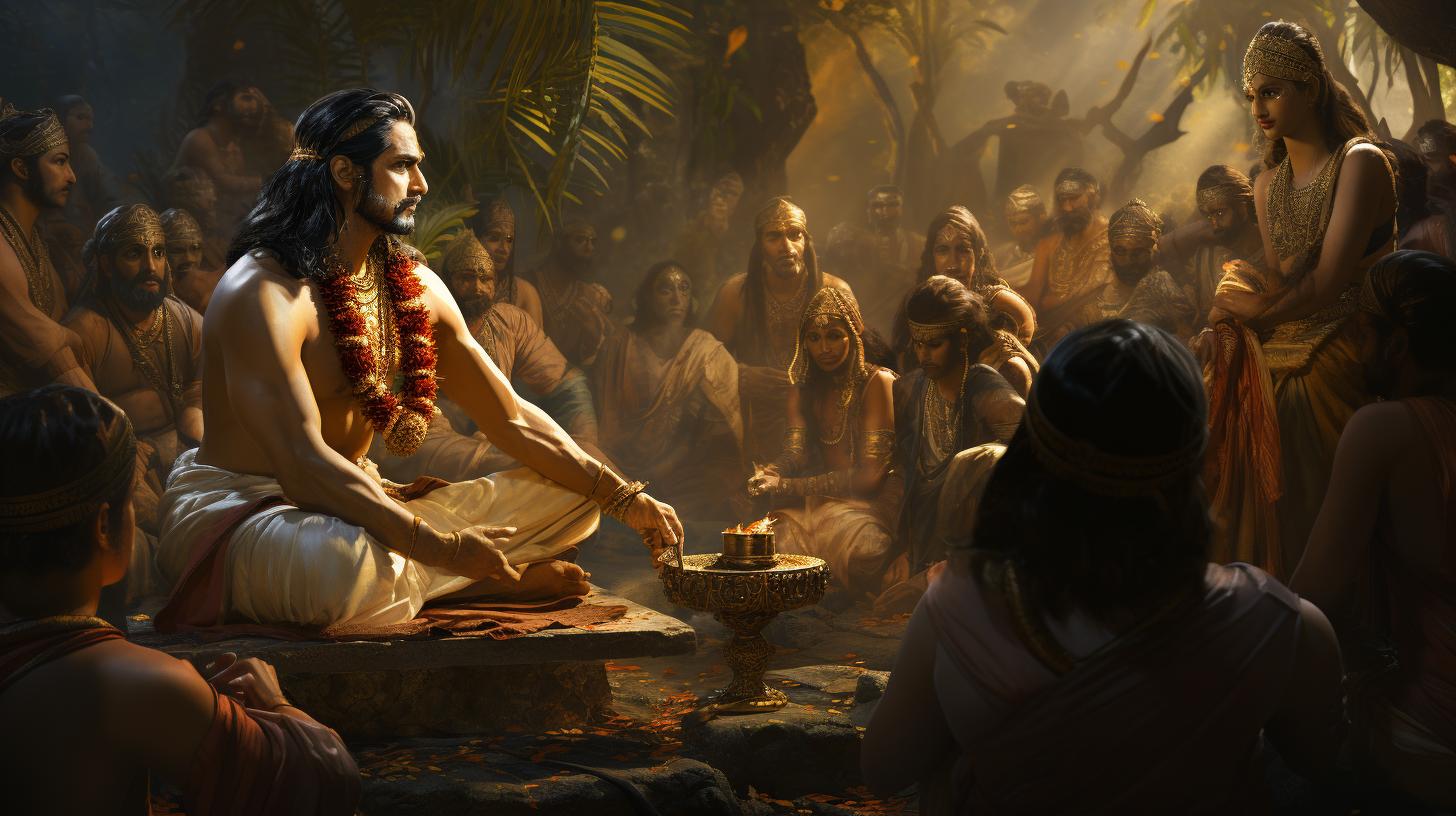
The story of sage Manu holds immense significance in Hindu mythology and Indian culture. Believed to be the first man, Manu played a crucial role during the great flood.
Guided by a divine fish, he constructed a boat to secure his survival along with his daughter. After the flood, Manu performed a sacred sacrifice, giving rise to a new human race.
In Hindu cosmology, a new Manu appears in each manvantara cycle, currently ruled by the seventh Manu, Vaivasvata. These texts explore the rich history and accomplishments of Manu and his connection to Vishnu’s avatars.
The Legend of Manu in Hindu Mythology
The story of Manu holds immense significance in Hindu mythology, shaping the cultural and religious beliefs of Indian society. Manu is revered as a pivotal figure, symbolizing the origin of humanity and embodying the essence of righteousness.
The Significance of Manu in Indian Culture
In Indian culture, Manu represents the epitome of righteousness, wisdom, and moral values. His name holds a special place in religious texts, scriptures, and ancient literature. He serves as a model for individuals to emulate and a source of inspiration to lead a virtuous life.
The Origin and Role of Manu in Hindu Beliefs
According to Hindu beliefs, Manu is considered the progenitor of the human race. He holds the distinction of being the first man, fulfilling vital roles as the initiator of sacrifices and the first ruler.
He is also attributed as the legendary author of the Manu-smriti, a Sanskrit code of law that guides moral conduct.
Manu’s journey begins during the great flood, wherein he plays a crucial role in the preservation and continuation of life on Earth.
His encounter with a divine fish, believed to be an incarnation of the deity Vishnu, brings forth warnings of the impending flood.
Guided by the divine fish, Manu builds a boat in preparation for the catastrophe, ensuring his survival and that of his daughter.
As the floodwaters rise, he takes refuge on the boat, eventually finding solace on the mountaintop where they are safe from the destruction below.
Once the floodwaters recede, Manu performs a sacred ritual, offering prayers and sacrifices.
It is during this ritual that a female descendant, who presents herself as Manu’s daughter, emerges from the waters, marking the beginning of a new human race.
The legends of Manu continue to perpetuate in the cycle of creation and destruction, as believed in Hindu cosmology.
Each new era, known as a manvantara, introduces a new Manu responsible for governing the subsequent human civilization. The current era is under the reign of the seventh Manu, named Vaivasvata.
These tales also mention the names of the fourteen Manus in their sequential order, their accompanying sages known as Saptarshis, and the avatars of Vishnu associated with each Manu. Each Manu and his contemporaneous sages contribute to the preservation of dharma (righteousness) and the guidance of society.
Manu and the Great Flood
According to Hindu mythology, the story of sage Manu takes a dramatic turn with the occurrence of the great flood, a cataclysmic event that threatened to obliterate humanity. Let us delve into the three key aspects of this gripping narrative: Manu’s encounter with the divine fish, his preparation for the deluge by building a boat, and his perilous journey to safety as the floodwaters engulfed the Earth.
Manu’s Encounter with the Divine Fish
Manu’s fate took an extraordinary twist when he encountered a divine fish, later revealed to be an incarnation of the god Vishnu. The fish warned Manu about an impending deluge that would ravage the world, urging him to take immediate action to ensure the survival of life itself.
Building the Boat: Manu’s Preparation for the Deluge
Fully aware of the magnitude of the catastrophe at hand, Manu diligently set out to construct a massive boat, meticulously following the instructions provided by the divine fish. With unwavering determination, he gathered the necessary resources and assembled the vessel that would become the refuge for himself, his family, and select species that would brave the impending flood.
The Deluge and Manu’s Journey to Safety
As the torrential rains poured down and the floodwaters surged, Manu embarked on a treacherous journey aboard the boat he had built. With the divine fish guiding him through the tempestuous seas, he navigated the cataclysmic waters until the vessel eventually came to rest on the mountaintop, a safe haven amidst the devastating flood.
Manu’s resilience, resourcefulness, and unwavering faith in the divine guidance enabled him to survive the great deluge, emerging as a beacon of hope and the harbinger of a new beginning for humanity.
Manu’s Sacrifice and the Birth of a New Human Race
Manu’s sacrifice after the devastating flood played a crucial role in the emergence of a new human race. It was a solemn ritual conducted to honor the divine forces and seek blessings for the rebuilding of civilization.
Manu’s Sacrificial Ritual after the Flood
Following the tumultuous flood that ravaged the Earth, Manu, the legendary figure, performed a sacred ritual. This ritual symbolized his gratitude and reverence towards the divine forces that had saved him and his daughter.
It was a heartfelt expression of devotion and a plea for divine guidance in the new era.
The Emergence of a Female Descendant: Manu’s Daughter
Intriguingly, during Manu’s sacrificial ceremony, a miraculous event occurred. From the sacred waters, a woman emerged, introducing herself as Manu’s daughter. She became the foundation of a new lineage that would carry forward the human race.
This unexpected emergence symbolized the resilience and continuity of life.
Manu and His Daughter as Ancestors of a New Civilization
Manu and his daughter, the sole survivors of the catastrophic flood, became the ancestral figures of a fresh civilization. Their descendants went on to repopulate the Earth, laying the groundwork for the diverse societies we witness today.
Manu’s lineage served as a beacon of hope and resilience in the face of adversity, perpetuating the legacy of the first man and his daughter.
The Cycle of Manu in Hindu Cosmology
In the rich tapestry of Hindu cosmology, the concept of the Manvantara holds great significance.
This cycle, divided into 14 periods, marks the sequence of time in which each Manu emerges as the progenitor of a new human race. Understanding the Manvantara and the role of Manu sheds light on the cyclical nature of creation and evolution in Hindu mythology.
Understanding the Manvantara and the Role of Manu
The Manvantara is a vast cosmic period, roughly equivalent to a day in the life of Brahma, the creator deity. Each Manvantara is presided over by a specific Manu, who serves as the pivotal figure in upholding order and dharma (righteousness) among humanity.
As a new Manvantara dawns, a new Manu is born to guide the next era of civilization.
The role of Manu during the Manvantara is multifaceted. He is not only responsible for preserving order and righteousness but also for imparting knowledge and moral values to the human race.
Manu’s wisdom and guidance shape the culture, laws, and societal norms of each era, ensuring harmony and balance.
The Current Seventh Manu: Vaivasvata and His Rule
In the present cosmic cycle, the seventh Manu holds the reins. Known as Vaivasvata, he is considered the current ruler in the lineage of Manus. Vaivasvata Manu governs with wisdom and divine grace, upholding justice and righteousness.
His rule serves as a beacon of enlightenment and moral values for humanity.
Under Vaivasvata’s guidance, humanity progresses towards spiritual growth and upliftment. His reign embodies the teachings of ancient scriptures and ensures the preservation of dharma.
Vaivasvata Manu’s presence continues to shape the destiny of the human race, navigating the ebb and flow of cosmic cycles.
In conclusion, exploring the cycle of Manu in Hindu cosmology opens our minds to the vastness and intricacies of creation and evolution.
Understanding the Manvantara and the role of Manu provides insight into the cyclical nature of existence and the profound impact of these ancient figures on the fabric of human civilization.
Unraveling the History and Accomplishments of the Fourteen Manus
Exploring the Lives of the Fourteen Manus in Sequential Order
Delving into the rich tapestry of Hindu mythology, we embark on a journey to uncover the stories and achievements of the fourteen Manus.
Each Manu represents a new era and plays a vital role in shaping human civilization. From the legendary Satyavrata to the current Vaivasvata, we explore their unique contributions and the impact of their reigns on the world.
The Role of the Saptarshis: Seven Sages for Each Manu
Accompanying each Manu during their rule are the esteemed Saptarshis, the seven sages chosen to guide and advise. These revered sages possess immense wisdom and divine knowledge, contributing to the development and preservation of dharma (righteousness) and society.
We delve into their close association with each Manu and their significant role in shaping the course of history.
Vishnu’s Avatars and their Connection to the Manus
Throughout the ages, Lord Vishnu, the preserver and sustainer of the universe, has taken numerous avatars (incarnations) to restore balance and protect dharma. These divine manifestations often coincide with the presence of a Manu, further highlighting the interconnection between cosmic forces and human history.
We explore the avatars associated with each Manu and their pivotal role in the ongoing cosmic cycle.

